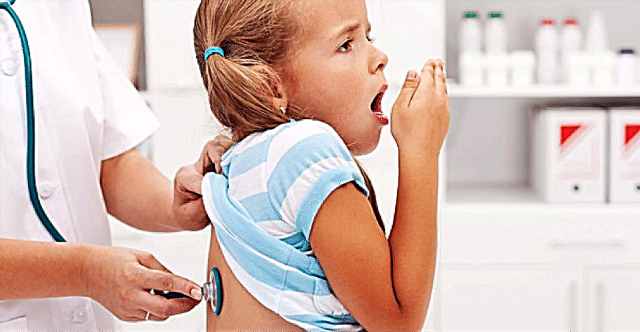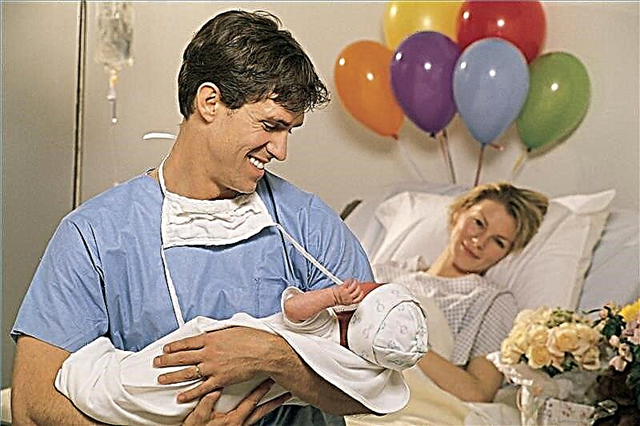Any head injury to a toddler can be dangerous. Even a light blow can damage the brain tissue and blood vessels inside the skull without initial symptoms. If a child hits the back of the head, what kind of injury could be serious, and what if this happens?

Child hit the back of the head
Physiological features of the child
Children who are already 9 months old begin to try to climb on their own legs and take their first steps, holding on to walls, furniture, etc. In a year, most babies walk on their own, but so far they are not confident. Their heads are larger in relation to other parts of the body and, when they lose their balance, take on the main blows when falling. Sometimes the baby can bump his head into various protruding objects and angles, since it is still difficult for him to coordinate his movements.
However, the baby's skull also consists of bones connected by cartilage, which provides them with free movement. Therefore, if a child falls even on the back of his head on the tile, the consequences of the blow are most likely not as serious as those of an adult. The kid will cry rather not from pain, but from fright.

The structure of the skull of a newborn
Important! In any case, if the child falls on the back of his head, it is necessary to observe him for some time, since it is possible that he will be injured.
What is the danger of a blow to the back of the head
There is no area of the brain that performs only one function, since they all work together and in a coordinated manner, the purpose of the occipital part is to process visual information.
Here is the area of the cerebral cortex, where information from the retina is received, then it is processed and sent to other brain centers. Therefore, blows to the back of the head, first of all, can provoke various visual disturbances.
Important! Even if the blow to the back of the head seems insignificant at first glance, it is better for the doctor to examine the baby, because the consequences may not appear immediately.
Possible consequences
If the back of the head is hit hard, visible injuries may occur. Sometimes nothing can be visually observed, except that a bump can come out. The negative consequences appear much later:
- Visual disorders such as loss of the left or right halves of the visual fields, inability to determine color, inability to identify objects;
- If the lesion is located only in the right lobe, then disorientation, achromatopsia (only black and white colors are perceived), prosopagnosia (inability to recognize faces) may occur;
- Dizziness, sleep disturbance, decreased brain activity, inability to concentrate.
In severe cases, blindness can be a consequence of the child hitting the back of the head on the floor.
Brain contusion
If the skull is bruised, headache or dizziness, impaired consciousness, or neurological symptoms may occur. At the same time, the brain remains unharmed and has no dysfunction.
If the injury is characterized as a contusion of the brain, this suggests that its membranes and tissues are damaged, internal hematomas and even edema are likely.

Brain contusion
In this case, loss of consciousness occurs, which can last from an hour to several days. The neurological symptoms that occur depend on the area of the brain affected. These include:
- convulsions;
- paralysis;
- respiratory and circulatory disorders;
- coma;
Severe headaches, nausea, and dizziness may also occur.
Concussion
If the child falls and bumps his head, forehead or the back of his head, for example, on ice, a concussion may occur, which is one of the minor traumatic brain injuries. The brain tissue is not damaged, but there is a temporary dysfunction of the cells.
If there is a loss of consciousness, this lasts from a few seconds to 15 minutes. Concussion is accompanied by nausea and vomiting, dizziness, confusion, and headache. In some cases, nystagmus occurs, a rapid, repetitive horizontal movement of the eyeballs.
Important! Typical concussion symptoms are often delayed in infants. Therefore, it is necessary to pay close attention to the condition of the baby after the fall.
Fracture
A skull fracture, characterized by damage to its bones, is one of the most dangerous injuries. The least alarming is linear fractures, when only a crack appears on the bone, which heals over time.
Important! Linear skull fractures are more common in children with falls and involuntary head bumps.

Linear fracture
The most severe case is a fracture of the base of the skull. Its signs:
- bruising around the eyes;
- bloody discharge from the nose or ears.
Traumatic brain injury
Brain contusion and concussion, skull fracture - all this is included in the concept of traumatic brain injury. It is a collective term for head injuries that result in functional disorder or brain damage. The most severe types are simultaneous damage to the bones of the skull, as well as the membranes and soft tissues of the brain.
A distinction is made between open head injury, in which the brain is partially open, and closed, when it is not visible. Its general symptoms are as follows:
- nausea, vomiting;
- memory loss;
- disorientation;
- dizziness;
- loss of consciousness.
According to the severity, traumatic brain injuries are divided into 3 types:
- Lightweight. Loss of consciousness is limited to 15 minutes. There are usually no neurological consequences;
- Average. Loss of consciousness can last up to an hour. Long-term effects may occur, but not very likely;
- Heavy. Loss of consciousness persists for more than an hour. Neurological damage is possible.
The severity is assessed according to the following criteria:
- Eye opening. Whether it happens spontaneously, when handling, painful irritation, or they do not open at all;
- Body motor function. Whether the child can move on demand, or is his ability to move limited.
Parents' actions
Ninety percent of all head injuries are minor. There is usually nothing to worry about if a child falls from his height on his face, forehead or back of the head, or hits a protruding handle. Only falls from a great height (over 2 meters) onto a hard surface, such as asphalt, can be especially dangerous.
There are rules for what to do if a child falls and hits his head hard:
- Provide peace by laying the baby down;
- If there is a skin wound, treat it with an antiseptic substance. If it is extensive, you will have to stitch in the hospital;
- If the baby has a lump, then apply ice to it or make a cold compress;

Cold compress to the site of the injury
- Do not allow the child to play noisy games and run.
It is not always possible to determine if everything will cost a wound or a bump, or if the brain has been damaged. An injury that looks harmless on the outside can cause bleeding on the inside. Therefore, the main task of parents is to closely monitor the child.
Important! If the baby is feeling well, you need to follow him for 12 hours after the injury. If the child does not show signs of impaired consciousness during this time, brain injury is very unlikely.
Babies often fall asleep after being injured. They must be woken up every hour for a 6-hour period after injury and the following things must be monitored:
- the child opens his eyes;
- if he already knows how to speak, does he answer questions;
- Whether the pupils constrict under a beam of light.
Warning signs
Typical signs of brain injury are dizziness, headache, nausea, and vomiting. They can occur even 24 hours after injury.
It is especially difficult to observe an infant in order to assess the severity of his condition. You need to know what symptom may indicate a serious traumatic brain injury. A sign may be if the baby's reaction to external stimuli is not the same as usual, he does it more slowly or inadequately, changes his behavior dramatically, for example, becomes apathetic, refuses to drink.
You must immediately call an ambulance if you have the following symptoms:
- loss of consciousness;
- multiple vomiting;
- Strong headache;
- external damage to the skull that goes beyond the usual bump or bruise;
- constant squinting or quick eye movements;
- noticeable changes in behavior and character;
- seizures or paralysis.
Ways to protect your child from head injury
- If the child is still very young, then he may fall from the changing table, so it is better to purchase it with high sides;
- You should not leave your baby alone on an open sofa or bed;
- When a baby is learning to walk, be sure to make sure that no protruding solid objects surround him;
- On the tiled floor, the baby can slip, you need to put on shoes with rubber soles or put rubber rugs in the bathroom and toilet room;
- Older children need head protection with a helmet when engaging in active sports such as roller skating or cycling. For toddlers, special protective helmets are available for sale.

Protective helmet for baby
Children are especially vulnerable to head injuries, but fortunately, the vast majority of them go without consequences. For babies with concussion, bed rest is sufficient. If there is damage to the bones of the skull or internal hematoma, surgery is required.



